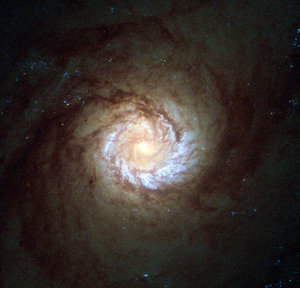Accept all cookies Accept only essential cookies See our Cookie Notice

About ESA
The European Space Agency (ESA) is Europe’s gateway to space. Its mission is to shape the development of Europe’s space capability and ensure that investment in space continues to deliver benefits to the citizens of Europe and the world.
Highlights
ESA - United space in Europe
This is ESA ESA facts Member States & Cooperating States Funding Director General Top management For Member State Delegations European vision European Space Policy ESA & EU Space Councils Responsibility & Sustainability Annual Report Calendar of meetings Corporate newsEstablishments & sites
ESA Headquarters ESA ESTEC ESA ESOC ESA ESRIN ESA EAC ESA ESAC Europe's Spaceport ESA ESEC ESA ECSAT Brussels Office Washington OfficeWorking with ESA
Business with ESA ESA Commercialisation Gateway Law at ESA Careers Cyber resilience at ESA IT at ESA Newsroom Partnerships Merchandising Licence Education Open Space Innovation Platform Integrity and Reporting Administrative Tribunal Health and SafetyMore about ESA
History ESA Historical Archives Exhibitions Publications Art & Culture ESA Merchandise Kids Diversity ESA Brand Centre ESA ChampionsSpace in Member States
Find out more about space activities in our 23 Member States, and understand how ESA works together with their national agencies, institutions and organisations.
Science & Exploration
Exploring our Solar System and unlocking the secrets of the Universe
Go to topicAstronauts
Missions
Juice Euclid Webb Solar Orbiter BepiColombo Gaia ExoMars Cheops Exoplanet missions More missionsActivities
International Space Station Orion service module Gateway Concordia Caves & Pangaea BenefitsLatest
Space Safety
Protecting life and infrastructure on Earth and in orbit
Go to topicAsteroids
Asteroids and Planetary Defence Asteroid danger explained Flyeye telescope: asteroid detection Hera mission: asteroid deflection Near-Earth Object Coordination CentreSpace junk
About space debris Space debris by the numbers Space Environment Report In space refuelling, refurbishing and removingSafety from space
Clean Space ecodesign Zero Debris Technologies Space for Earth Supporting Sustainable DevelopmentApplications
Using space to benefit citizens and meet future challenges on Earth
Go to topicObserving the Earth
Observing the Earth Future EO Copernicus Meteorology Space for our climate Satellite missionsCommercialisation
ESA Commercialisation Gateway Open Space Innovation Platform Business Incubation ESA Space SolutionsLatest
Enabling & Support
Making space accessible and developing the technologies for the future
Go to topicBuilding missions
Space Engineering and Technology Test centre Laboratories Concurrent Design Facility Preparing for the future Shaping the Future Discovery and Preparation Advanced Concepts TeamSpace transportation
Space Transportation Ariane Vega Space Rider Future space transportation Boost! Europe's Spaceport Launches from Europe's Spaceport from 2012Latest

Channelling light from starbursts
Thank you for liking
You have already liked this page, you can only like it once!
The focus of this week’s Hubble Picture of the Week is the blue compact dwarf galaxy NGC 5253, located in the constellation Centaurus around 11 million light-years from Earth. This new image combines data taken with Hubble’s Advanced Camera for Surveys (ACS), using its Wide Field Channel, and with the older Wide Field and Planetary Camera 2 (WFPC2). As a bonus for this Picture of the Week, there is also a second new image made using data from the High Resolution Channel (HRC) of ACS, a sub-instrument only operational for a few years that was optimised for detailed studies of environments dense with stars.
What has interested astronomers so much about this galaxy that three of Hubble’s instruments were used to study it in depth over ten years? It turns out to lie at the focus of a few areas of research where Hubble’s capabilities are essential. Dwarf galaxies are considered important for understanding the evolution of both stars and galaxies through time, since they resemble ancient, distant galaxies. NGC 5253 is called both a “starburst galaxy” and a “blue compact dwarf”: these names mean it is forming clusters of bright, massive stars at an exceptional rate. This Hubble image clearly shows the dense nebula which is being consumed to birth these stars, and which makes NGC 5253 a laboratory to investigate stellar composition, star formation and star clusters, all at once.
A tremendously high rate of star formation is a recipe for star clusters, but NGC 5253 goes beyond that: in a small region of the core, the star formation is so intense that the galaxy contains no less than three “super star clusters” (SSCs). SSCs are very bright, populous and massive open clusters which are believed to evolve into globular clusters. Globular clusters themselves offer unique insights into how stars form and evolve, but their origins are poorly understood. Astronomers were therefore eager to make use of the HRC sub-instrument, with its superb resolution, to hone in on these small, very dense clusters of stars.
[Image Description: An oval-shaped galaxy, made up of many point-like stars. It is softly lit from the centre, brightest and slightly blue at the very centre and fading to darkness at the edges. Surrounding the galaxy’s core are reddish clouds of gas and dust, most around or behind the core, but a few wisps are in front of it and block some light. Some faraway galaxies and two foreground stars can be seen around the galaxy.]
-
CREDIT
ESA/Hubble & NASA, A. Zezas, D. Calzetti -
LICENCE
CC BY 4.0 INT or ESA Standard Licence
(content can be used under either licence)

NGC 5253 (ACS/HRC)

NGC 5253 (collage)

A hungry starburst galaxy

Starbursts on grand scale















 Germany
Germany
 Austria
Austria
 Belgium
Belgium
 Denmark
Denmark
 Spain
Spain
 Estonia
Estonia
 Finland
Finland
 France
France
 Greece
Greece
 Hungary
Hungary
 Ireland
Ireland
 Italy
Italy
 Luxembourg
Luxembourg
 Norway
Norway
 The Netherlands
The Netherlands
 Poland
Poland
 Portugal
Portugal
 Czechia
Czechia
 Romania
Romania
 United Kingdom
United Kingdom
 Slovenia
Slovenia
 Sweden
Sweden
 Switzerland
Switzerland
























